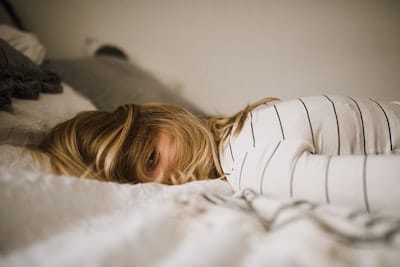In a groundbreaking study led by researchers at Semmelweis University in Budapest, Hungary, a comprehensive exploration into various sleep disorders, or ‘parasomnias,’ has revealed a spectrum of bizarre activities individuals unwittingly engage in while asleep. The study, published in the Journal of Clinical Neuroscience, highlights ten distinct parasomnias, ranging from the relatively common sleepwalking and sleeptalking to more unusual behaviours such as handling sharp objects, engaging in sex, and even driving.
First author Vivian Correa explains that non-rapid eye movement (NREM) parasomnias often manifest during the deep sleep stage, where individuals find themselves in a state between sleep and wakefulness. This transitional state may lead to activities like handling sharp objects, leaving home, or, in extreme cases, driving. Sleep-related activities such as eating and sex, the study notes, can also occur during this semi-conscious state.
Sexsomnia, the unintentional initiation of sex during sleep, is gaining public awareness. The Sleep Foundation suggests external factors like stress and alcohol may contribute to this phenomenon. The disorder can lead to confusion upon waking and, in some cases, pose challenges related to consent, potentially leading to legal consequences.
Driving as a parasomnia, the study distinguishes, involves individuals getting out of bed, going outside to their cars, and starting the engine—all while still asleep. While relatively rare, incidents involving violence and even murder during sleep have been documented, raising complex issues regarding accountability.
To conduct the study, researchers searched YouTube for terms related to unintentional sleep activities between January and July 2022. Analyzing 224 selected videos, they observed that the top three parasomnias were sleeptalking, emotional behaviours like crying and laughing, and sleepwalking. The age and gender analysis revealed intriguing patterns, with elderly males exhibiting a 40-fold likelihood of aggressive movements compared to adults and children.
Elderly individuals, overall, showed lower odds of sleepwalking, sleep-talking full sentences, or engaging in hazardous behaviours like leaving the house or driving during sleepwalking. Conversely, females displayed a higher likelihood of performing complex manual activities, such as handling electricity or kitchen tools.
While sleep disorders affect 10 to 15 percent of children, the prevalence decreases in adulthood (three to four percent) and is even rarer in old age. However, individuals experiencing challenging or traumatic sleep episodes are more likely to seek medical attention.
The study aims to raise awareness of age and sex-related risk factors associated with parasomnias. Stress and anxiety, sleep deprivation, and alcohol intake are identified as potential risk factors, and the researchers advocate for better risk management strategies.
Acknowledging the limitations of their study, primarily relying on YouTube videos without demographic or historical data, the researchers call for more comprehensive methods in future studies. Despite these limitations, the findings provide valuable insights into the diverse and complex world of parasomnias, shedding light on behaviours that occur when individuals find themselves in the peculiar realm between sleep and wakefulness.
In conclusion, this research broadens our understanding of parasomnias and underscores the need for continued exploration into sleep disorders. As we unravel the mysteries of activities performed in the twilight zone between consciousness and slumber, the implications for individuals’ well-being and public safety become increasingly apparent. The quest for effective risk management strategies and therapeutic interventions remains a priority as we navigate the intricacies of the human sleep experience.

